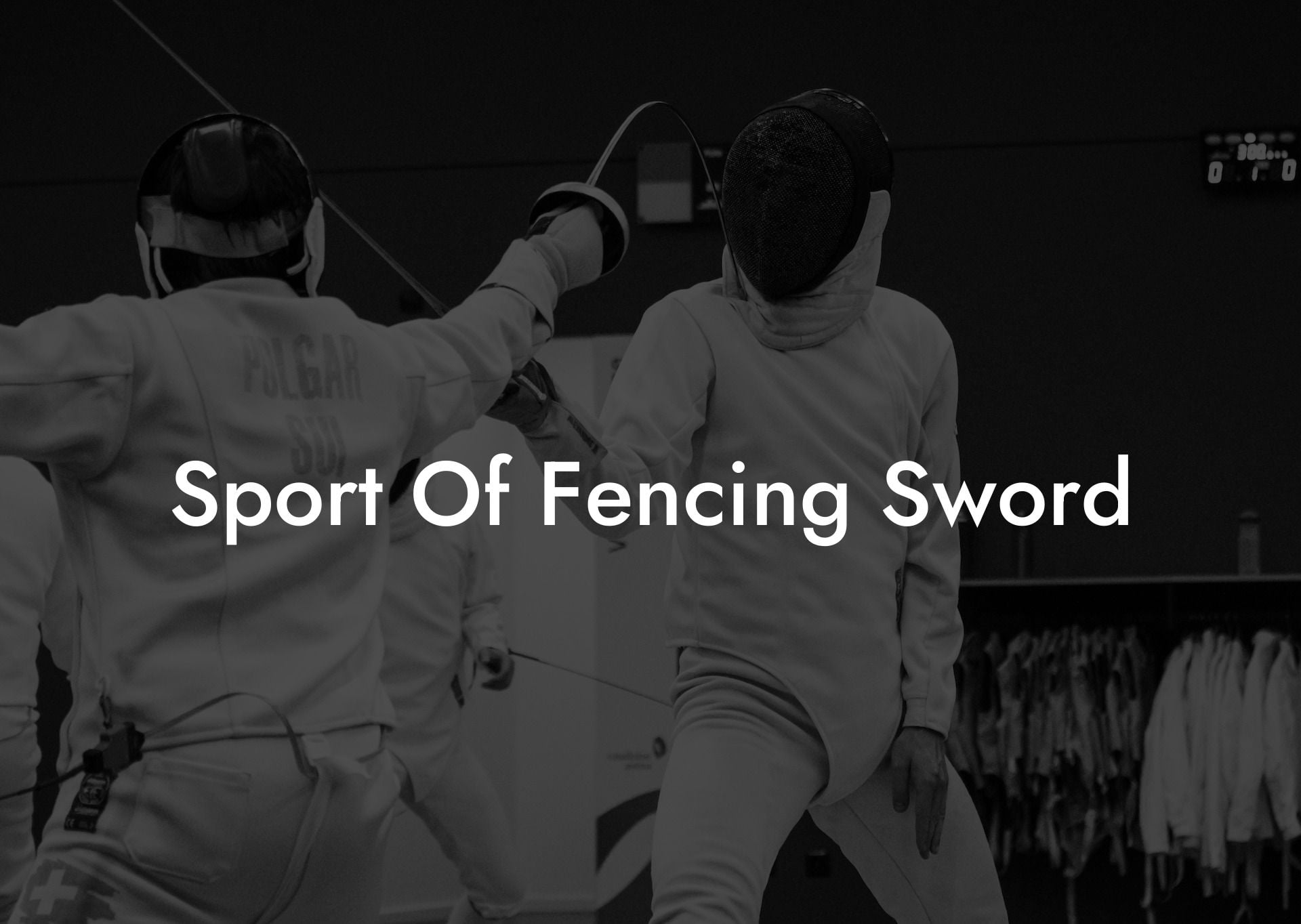Discover the exhilarating world of fencing and its prominent weapon - the fencing sword! Delve into the rich history, types, and techniques behind this elegant and strategic sport, and learn how you can become a skilled fencer, wielding your sword with precision and confidence.
Sport Of Fencing Sword Table of Contents
A Brief History of Fencing
Fencing has a long and storied history, dating back to ancient civilizations. Initially created for dueling and self-defense, fencing evolved into a disciplined sport with its own unique rules, techniques, and weapons. In the early 19th century, modern fencing took shape, and it eventually became an Olympic event in 1896.
Types of Fencing Swords
There are three types of fencing swords, each with its own distinct characteristics and tactics:
1. Foil
The foil is the first and lightest of the three swords, with a thin, flexible blade. It's considered the ideal weapon for beginners, as it helps to develop the foundational skills needed to excel in other styles. In foil fencing, the target area is the opponent's torso, and points are scored through touches with the tip of the blade.
2. Épée
Épée is a heavier sword with a stiffer blade, allowing for greater striking strength. This weapon is used in a style that emphasizes strategy and timing, requiring a more patient approach. The entire body is a valid target in épée fencing, making defense and accuracy crucial. Points are scored through touches with the tip of the blade, just like in foil fencing.
3. Sabre
Sabre fencing is perhaps the most aggressive of the three styles, featuring a curved sword with a cutting edge. Sabre fencers can score points by using both the tip and the edge, making for faster and more dynamic bouts. The target area in sabre fencing includes the entire upper body, from the waist up.
Fencing Techniques
Fencing techniques can be broken down into three main categories:
Footwork
Footwork is the foundation of fencing, allowing the athlete to maintain proper distance, positioning, and balance. Some essential footwork techniques include:
- Advance: A forward step, closing the distance between fencers.
- Retreat: A backward step, increasing the distance between fencers.
- Lunge: An explosive forward movement, closing the distance quickly for an attack.
Defensive Techniques
Good defense is crucial to success in fencing. Fencers can deploy a variety of defensive techniques, including:
- Parry: A block or deflection of an opponent's attack with the blade. This creates an optimal opportunity for a counterattack.
- Distance Management: Maintaining or adjusting the space between fencers to avoid an opponent's attack.
- Counterattacks: Quick, timely attacks launched in response to an opponent's actions, taking advantage of their vulnerability.
Offensive Techniques
Offensive techniques must be executed accurately and decisively to score points. Key offensive techniques include:
- Thrust: A straight attack with the tip of the blade, used in foil and épée fencing.
- Cut: A slashing attack with the edge of the blade, used in sabre fencing.
- Feints: False attacks to deceive the opponent, creating openings for a real attack.
Sport Of Fencing Sword Example:
Imagine a sabre fencing bout, where both opponents engage in a fast-paced exchange of attacks and parries. Fencer A launches an aggressive attack, aiming for Fencer B's chest. Fencer B anticipates this and executes a lightning-quick parry, deflecting the incoming strike. Seizing the opportunity, Fencer B lunges for a counterattack, landing a touch on Fencer A's arm and scoring a point.
As you can see, the sport of fencing is an exciting world of strategy, precision, and athleticism. With the right mindset, practice, and equipment, you, too, can master the elegant art of the fencing sword. Be sure to explore the many resources and guides available on Anchorage Fencing Club to master your skills and unleash your inner fencing champion. Don't forget to share this article with fellow fencing enthusiasts and inspire others to join the fascinating world of fencing!













